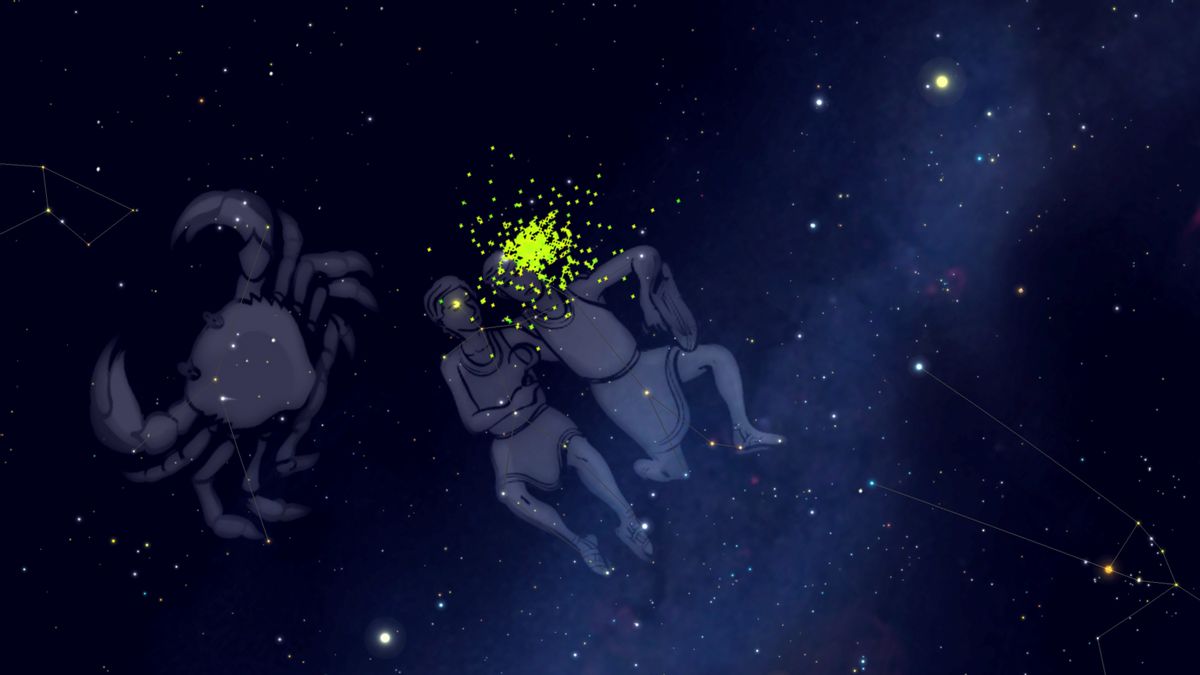JAKARTA - This week the Earth will have one of the most amazing meteor showers, the Geminids. This astronomical phenomenon can be seen all over the world.
Quoting the National Institute of Aeronautics and Space (LAPAN), Monday, December 13, the Geminids are the main meteor showers whose origins or radians are near the star Alfa Geminorum (Castor) in the Gemini constellation.
This meteor shower is sourced from the dust remnants of the asteroid 3200 Phaethon (1983 TB) which orbits the Sun for 523.6 days. The Geminid meteor shower can be seen from 20.30 local time until the next day at the end of the sea dawn (25 minutes before sunset) from Northeast to Northwest.
The intensity of this meteor shower for Indonesia ranges from 86 meteors/hour (Sabang) to 107 meteors/hour (Rote Island). This is because the radian point culminates at an altitude of 46 degrees to 63 degrees north, while the intensity of the meteor shower at the zenith is 120 meteors/hour.
According to LAPAN, if you want to see the phenomenon that will take place from December 14 to 15, make sure to be in a location that has sunny weather and is free from obstructions and light pollution around the field of view.
Because the intensity of this meteor shower is directly proportional to 100 percent minus the percentage of cloud cover and inversely proportional to the Bortle scale (a scale that indicates the level of light pollution, the larger the scale, the greater the light pollution).
Meanwhile, NASA advises those of you who want to see this meteor shower, “If it's not cloudy, stay away from bright lights, lie on your back, and look up. Remember to let your eyes adjust to the darkness and you'll see more meteors that way", NASA said.
Keep in mind, this adjustment can take about 30 minutes. Do not look at the phone screen at all, as it will impair night vision.
“Meteors can generally be seen throughout the sky. Avoid watching the beam as meteors close to it have a very short path and are easy to miss. When you see a meteor, try to track it backward. If you end up in the constellation Gemini, there's a good chance you're seeing the Geminids. Observing in a city with a lot of light will make it difficult to see the Geminids", NASA said.
Baca juga:
- https://voi.id/teknologi/113166/fcc-beri-lisensi-spacex-milik-elon-musk-tapi-izin-terbang-starship-tunggu-persetujuan-faa
- https://voi.id/teknologi/113164/faa-nyatakan-program-luar-angkasa-blue-origin-milik-jeff-bezos-tak-bermasalah
- https://voi.id/teknologi/113182/pemerintah-korsel-luncurkan-proyek-pengenalan-wajah-untuk-deteksi-pasien-covid-19-dikritik-langgar-privasi-masyarakat
- https://voi.id/teknologi/113183/intel-luncurkan-teknik-pembuatan-chip-yang-diklaim-lebih-cepat-dari-para-pesaingnya
- https://voi.id/teknologi/113184/perusahaan-modal-ventura-di-asia-investasi-bangun-aplikasi-assembly-yang-mudahkan-si
The intensity of this meteor shower will also decrease slightly because the Moon is near the zenith when the radian point is rising. However, if you want to see the Geminid meteor shower online, here's how to do it, VOI tells Digital Trends.
How to Watch the Geminids Meteor Shower Online.
If you can't watch the meteor shower in person, or if you don't like trekking in cold weather, then there's also the option to watch it online.
NASA will live stream the view from its meteor camera at NASA's Marshall Space Flight Center in Huntsville, Alabama, during the peak of the meteor shower. The live stream begins at 9 p.m. ET (9.00 BST) today and will be featured on NASA's Meteor Watch Facebook page.
The English, Chinese, Japanese, Arabic, and French versions are automatically generated by the AI. So there may still be inaccuracies in translating, please always see Indonesian as our main language. (system supported by DigitalSiber.id)













